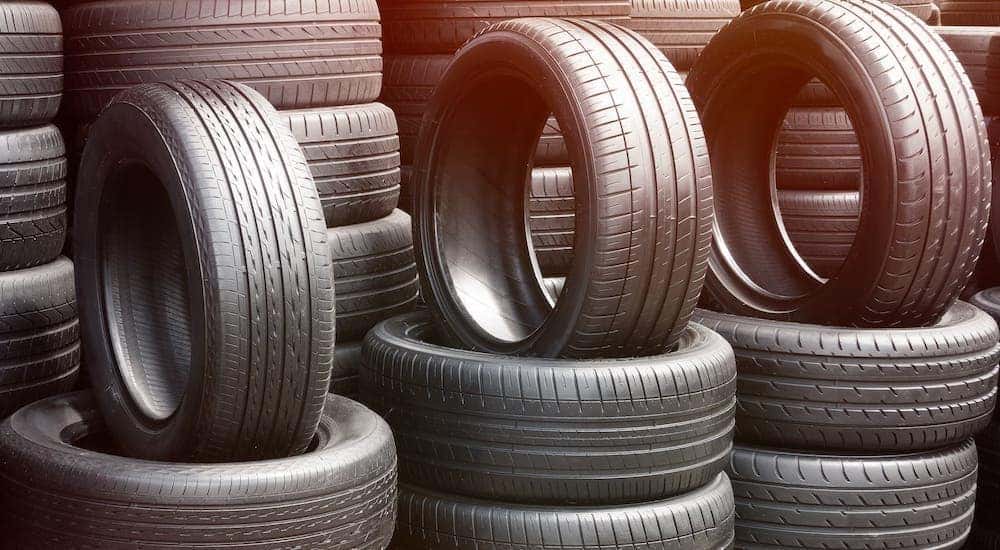Conserve Big with Mopar Tire Service Specials in Morris: Limited Time Uses
Conserve Big with Mopar Tire Service Specials in Morris: Limited Time Uses
Blog Article
Tire Service: Comprehending Tire Pressure Surveillance Solutions
Comprehending Tire Pressure Surveillance Equipments (TPMS) is an essential element of maintaining optimum car efficiency and safety and security on the roadway. With innovations in vehicle technology, TPMS has actually come to be a typical attribute in modern-day lorries, offering real-time info on tire stress degrees. Diving deeper right into the complexities of TPMS, one can uncover the different parts that comprise this system and the significance of each in making certain exact tracking. From direct to indirect TPMS systems, the landscape of tire pressure monitoring is diverse, each with its unique collection of considerations and advantages. Remain tuned to untangle the complexities of TPMS, from upkeep suggestions to the obvious benefits of maintaining your tires appropriately pumped up. mopar tire service specials.

Relevance of TPMS
The relevance of Tire Pressure Surveillance Solutions (TPMS) exists in their ability to boost car security and performance through real-time surveillance of tire stress levels. Keeping the correct tire stress is essential for making sure optimum handling, stopping, and total safety of a car. TPMS provides vehicle drivers with prompt responses on any type of overinflated or underinflated tires, permitting timely modifications to be made.
Parts of TPMS
Comprising numerous essential components, a Tire Pressure Surveillance System (TPMS) operates as an advanced safety and security attribute in modern-day lorries. The main elements of a TPMS include sensing units, a control module, and a warning indication. Sensors are typically located in the tire shutoff stem or connected to the wheel assembly, where they measure tire pressure and transfer information to the control module. If it identifies significantly reduced pressure in any of the tires, the control module processes this information and triggers a caution. The warning sign, commonly a symbol on the dashboard, notifies the vehicle driver to check the afflicted tire or tires. Some advanced TPMS models also present the real tire stress analyses for every tire, giving motorists with real-time details to make certain optimal tire performance and safety and security. By keeping track of tire stress continually, TPMS assists avoid mishaps, reduces tire wear, and improves fuel efficiency, making it an essential element for car safety and security and performance.
Kinds Of TPMS

On the various other hand, indirect TPMS counts on the vehicle's wheel rate sensors to keep track of tire stress. This system identifies underinflation by contrasting the rotational speeds of the anchor wheels. Indirect TPMS is much less costly than direct TPMS, as it utilizes existing sensing units within the vehicle.
While direct TPMS supplies more precise readings, indirect TPMS is less complex in style and usually requires much less maintenance. Both systems have their benefits and constraints, and the option between navigate to this site them usually depends on factors such as cost, lorry make, and individual preference. Understanding the distinctions between these two kinds of TPMS can help lorry proprietors make informed choices concerning tire upkeep and safety.
TPMS Maintenance Tips
Conduct routine checks on the tire pressure levels and contrast them with the TPMS readings to guarantee they are constant. During tire turning or substitute, make certain that the TPMS parts are taken care of thoroughly to protect against any type of prospective damage. If the TPMS advising light brightens on the dashboard, resolve the problem immediately by examining the tire pressures and the total system for any type of faults.
Benefits of Correct Tire Stress
Maintaining correct tire stress, as emphasized in TPMS Upkeep Tips, is important for enjoying the numerous advantages related to ideal tire pressure degrees. Among the key advantages of preserving the right tire stress is boosted fuel efficiency. When tires are correctly blown up, there is less moving resistance, resulting in much better fuel economic situation. Furthermore, correct tire pressure ensures even tire wear, extending the life-span of the tires and advertising more secure driving conditions. With the ideal tire stress, cars likewise have far better handling and grip, especially in negative weather. This can boost general driving performance and safety and security for the chauffeur and travelers. Keeping optimum tire stress can contribute to a smoother and extra comfy ride by minimizing resonances and sound caused by underinflated tires. In conclusion, the advantages Find Out More of correct tire pressure surpass just tire long life; they incorporate boosted fuel effectiveness, enhanced safety, better automobile performance, and total driving convenience.
Conclusion
In final thought, recognizing tire stress tracking systems (TPMS) is important for preserving optimum tire pressure and making certain vehicle safety. By acknowledging the significance of TPMS, being acquainted with its components, knowing the different types readily available, sticking to correct upkeep suggestions, and recognizing the advantages of maintaining correct tire pressure, vehicle drivers can boost their driving experience and prolong the lifespan of their tires. Proper tire stress is crucial to efficient and safe car procedure.

Report this page